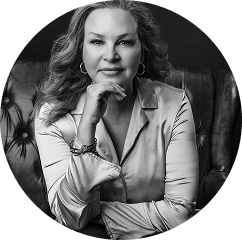Understanding the Different Types of Land Ownership in Real Estate
When buying or selling property, understanding the various types of land ownership is crucial. The type of ownership affects your rights, responsibilities, and how the property can be used or transferred. In this blog, we’ll break down the most common types of land ownership you’ll encounter in real estate, including freehold, bare land strata, cooperative ownership, and more.1. Freehold Ownership (Fee Simple)
What is it?Freehold ownership, also called fee simple, is the most complete form of property ownership. When you own a freehold property, you own both the building and the land it sits on indefinitely.Key features:
- You have full control over the property and land, subject to local zoning laws and regulations.
- You can sell, lease, or modify the property as you wish.
- You are responsible for property taxes, maintenance, and improvements.
Ideal for buyers wanting full autonomy over their property with no shared ownership complications.
2. Bare Land Strata Ownership
What is it?Bare land strata ownership refers to owning a lot of land as a separate title in a strata corporation, often seen in townhouse or mobile home parks. You own the land itself, but common areas (roads, parks, driveways) are shared among owners.Key features:
- You own the land your home sits on, plus any improvements on that land.
- Shared responsibility for common property through strata fees.
- Strata bylaws govern use and maintenance of the common areas.
Suitable for buyers wanting land ownership but with shared amenities and responsibilities.
3. Cooperative Ownership (Co-op)
What is it?In a cooperative ownership, the property is owned by a corporation. Instead of owning your unit outright, you buy shares in the cooperative that entitle you to occupy a unit.Key features:
- You don’t hold title to your individual unit; you have a share in the entire property.
- The cooperative board manages the property and common areas.
- Monthly fees cover maintenance and operating expenses.
Often attractive for people seeking a more community-oriented living situation, like certain apartment buildings.
4. Leasehold Ownership
What is it?Leasehold means you own the building or improvements on the land but lease the land itself from another party, usually for a long term (e.g., 99 years).Key features:
- You pay ground rent or lease fees to the landowner.
- Ownership rights revert to the landowner after the lease expires unless renewed.
- Can affect financing and resale value.
Common in areas where land is owned by the government or Indigenous groups, or in planned developments with lease agreements.
5. Joint Tenancy and Tenancy in Common
What is it?These are forms of shared ownership where two or more people own property together.
- Joint Tenancy: Equal ownership shares with right of survivorship, meaning if one owner dies, their share passes automatically to the other owner(s).
- Tenancy in Common: Ownership shares can be unequal, and upon death, shares go to heirs, not automatically to other owners.
- Both forms allow multiple owners but differ in inheritance rights.
- Important to understand when purchasing property with family, friends, or business partners.
Why Does Understanding Land Ownership Matter?
Knowing your type of ownership helps you:- Understand your legal rights and responsibilities.
- Plan for property taxes, maintenance, and community fees.
- Navigate resale or transfer of ownership more smoothly.
- Avoid surprises related to land use restrictions or shared ownership conflicts.
Need Help Navigating Land Ownership?
Every type of ownership comes with unique considerations. If you’re buying or selling a property and want to understand what’s best for your situation, I’m here to help. Contact me for expert advice tailored to your needs.778-678-5466


